Table of contents:
As Japan can be divided into six climate zones due to its length, from subtropical to cool temperate, there is no single answer to when is the best time to travel to Japan. Rainy season, high humidity and typhoons are just as much part of the climate as Siberian winds. So it all depends on what temperatures you prefer for your holiday and what you want to see in Japan.
To keep it clear, we'll simply combine the six zones into three:
- Hokkaido and the northern part of the main island of Honshu
- Central Japan around Tokyo, Osaka and Kyoto
- the southern part of Honshu, together with Okinawa
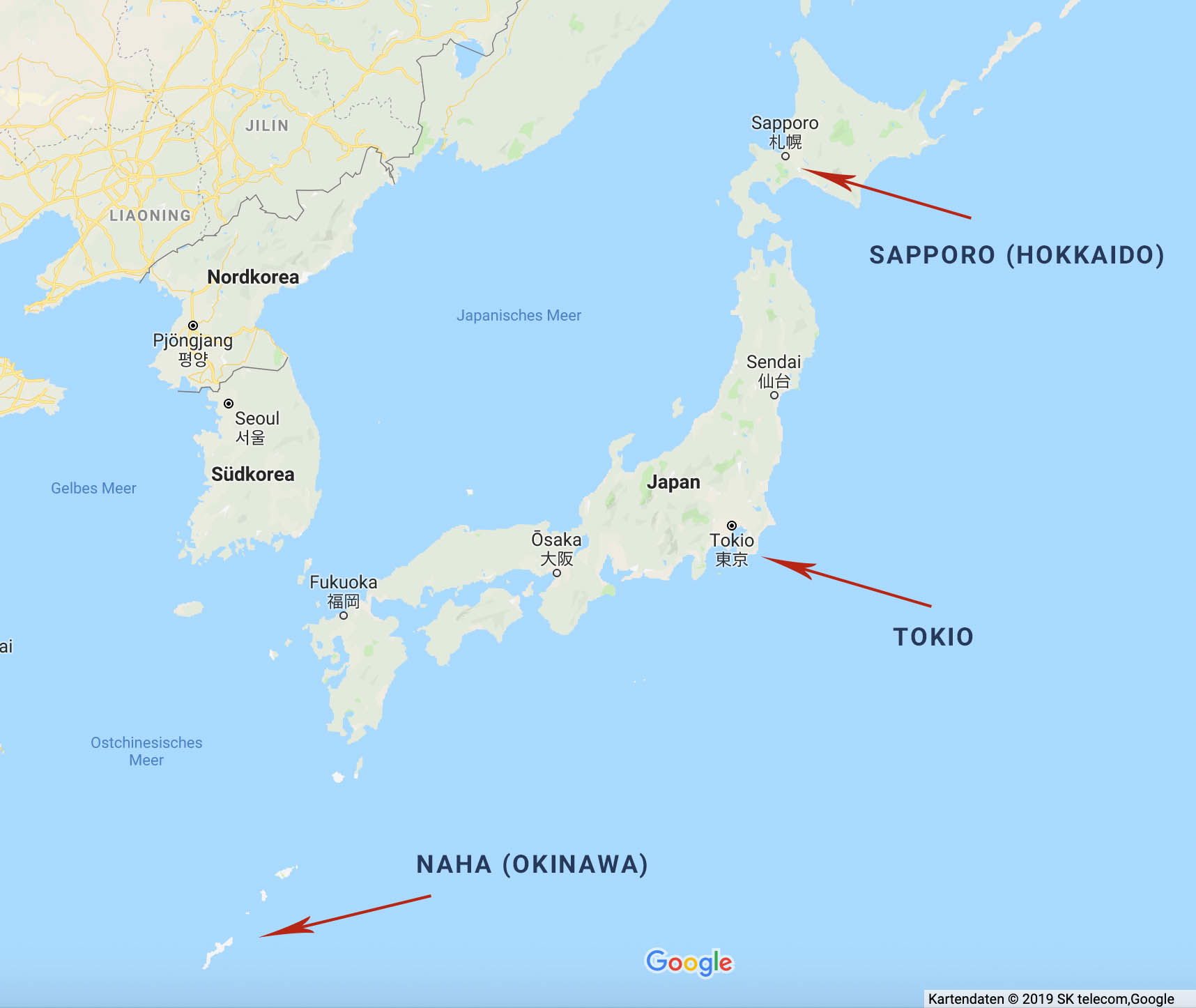
Southern Japan (Okinawa, Fukuoka; subtropical)
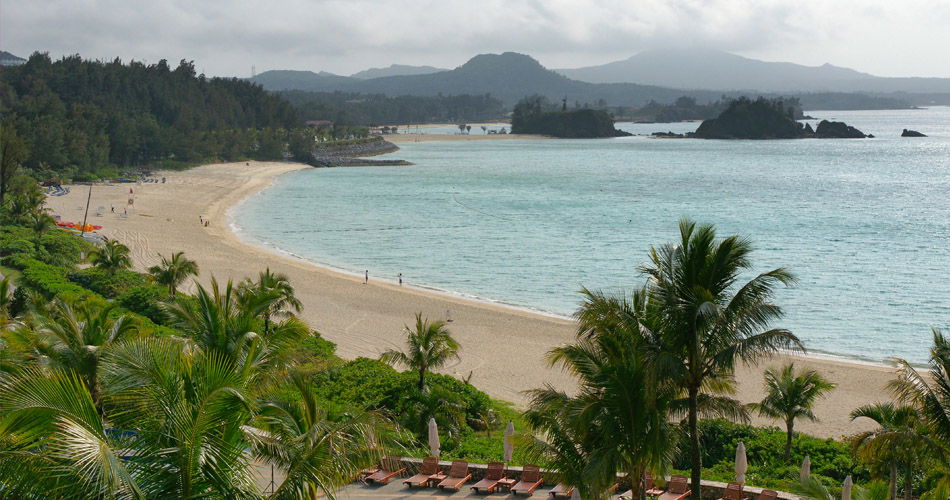
Okinawa in particular is a true paradise for beach lovers and anyone who wants to escape the cold. Even in January, average temperatures are still around 17 degrees.
Residents and tourists have white sandy beaches at their disposal almost all year round, only closed from November to February. However, you should definitely keep an eye on the rainy season and typhoon season. The former starts in May and ends in mid-June, while the latter lasts from July to September.
If you travel to southern Japan at the beginning of the year, you can enjoy the first cherry blossoms, which can be seen from January onwards, depending on the region, due to the warm and humid climate.

Central Japan (Tokyo, Osaka, Kyoto; temperate)
Temperatures in Central Japan are typically slightly higher than in Germany. So in spring and autumn, mild temperatures of 15 to 20 degrees prevail, usually including sunshine. The weather is ideal, especially in April/May and October/November.
As in the south, there is a rainy season, which in Central Japan brings torrential downpours, especially in June and July. The resulting rising temperatures and extremely high humidity then extend into September. Temperatures of at least 30 degrees are normal, especially in August, which feel significantly more oppressive due to the high humidity.
From December onwards, it gets fresh, with -5 to 10 degrees and snow in the mountainous regions.
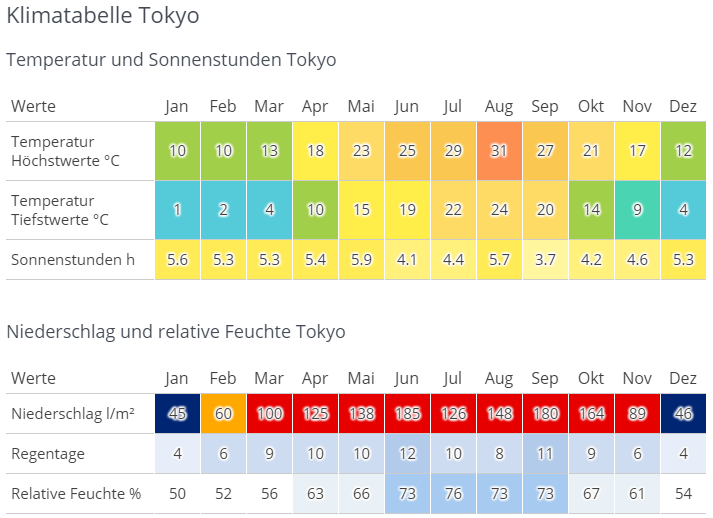
Northern Japan (Aomori, Hokkaido; cool temperate)
Northern Japan is a dream for all winter sports enthusiasts and hikers. From December to March, snow falls throughout the region, sometimes meters deep, and temperatures rarely climb above 0 degrees. In summer, from June to August, you can enjoy nature at pleasant temperatures of just under 25 degrees.

German Climate vs. Japanese Climate
One thing the countries have in common is that they both have four distinct seasons. While Northern Japan is closest to the German climate, temperatures in Central Japan are on average slightly higher and in Southern Japan significantly higher than in Germany. However, the high humidity and rainy season of Japan cannot be found in Germany at all.

What shapes the Japanese weather?
Since Japan spans several degrees of latitude, the climate is influenced by various winds and air currents. So in winter in Northern Japan, you have to prepare for Siberian winds that bring snow and freezing temperatures. In contrast, tropical air currents in summer bring monsoon rains and heat to Southern Japan. Added to this are warm and cold ocean currents in the south and northeast, which further accentuate the differences in climate.
You should also keep in mind that there is generally no drought in Japan. It can rain all year round, with most rainfall in Central Japan and the least in the north of the country.
What are you planning for your stay in Japan?
Winter sports
Hokkaido and the northern regions of Honshu offer tons of snow and world-famous ski slopes for you. Whether you're a beginner or an expert, there's something for everyone!
Beach holiday
You can relax on the beaches of Southern Japan as early as March, especially Okinawa is second to none to other famous holiday destinations like Hawaii. If you mainly want to go swimming, you should avoid the peak summer months, as it can often rain. Only diving or snorkeling is still possible.
Metropolitan Tokyo
Spring and autumn are particularly suitable, as the city heats up extremely in summer and winters can be icy.
Soak up nature
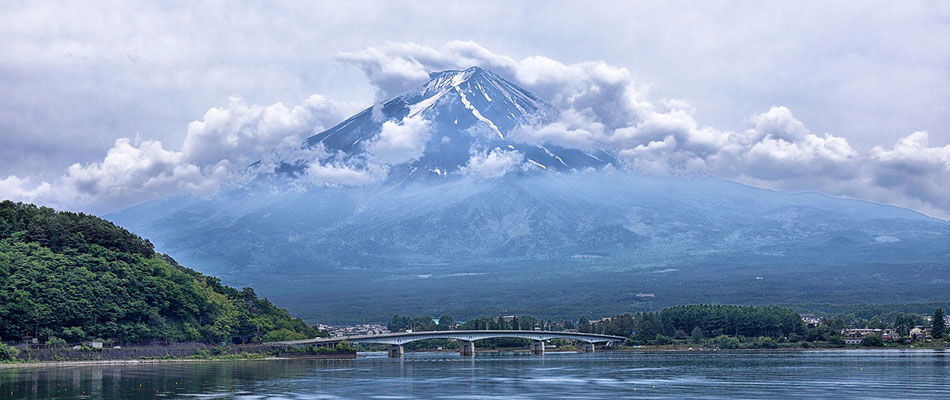
Especially for hikers, Hokkaido in summer is recommended, as you can expect breathtaking landscapes and mild temperatures.
Tip for everyone who doesn't like the heat
If temperatures above 30 degrees and high humidity are a nightmare for you, you should avoid summer in Central and Southern Japan completely.
The 4 Seasons
Spring
Nothing shapes Japanese spring as much as cherry blossom season. Every year, tourists flock to Japan to enjoy a sea of white and pink at mild temperatures. Spring is particularly popular among honeymooners!
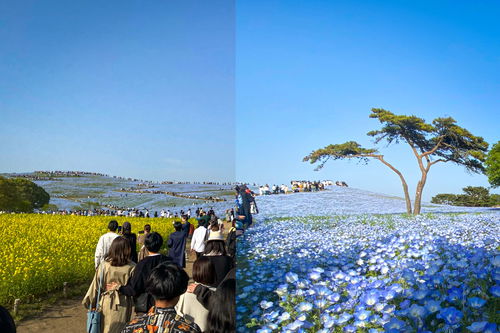
Summer
Besides beaches and mountains, there are also many different summer festivals to chase away the summer heat - fireworks included.

Autumn
Autumn awaits you with pleasant temperatures and the changing colours of the deciduous trees, which make the country glow in red, gold and orange.
Winter
The best time for winter sports enthusiasts, especially skiers and snowboarders get their money's worth. If you prefer a more relaxed pace, you can visit the hot springs (Onsen) or take a walk through the snowy landscapes. The best seafood is also caught in winter.
My personal favorite season
For me, spring and autumn are at the top, because it's not too cold, but not too warm either. Plus, it's usually clear skies, the perfect combination! I compare the Japanese summer to a greenhouse, or even a tropical house at the zoo. It's just uncomfortably hot, humid and oppressive.
Incidentally, unlike in Germany, the transitions between the seasons seem more fluid and not quite as abrupt to me.
Holidays and peak season in Japan
If possible, try to avoid peak season and major holidays! Not only exorbitant prices, but also crowds will put your patience to the test.
Cherry blossoms
The first major highlight on the Japanese calendar is cherry blossom season. From late March to early April, tourists and Japanese alike compete for the most beautiful cherry blossom trees.
Golden Week
In the week from late April to early May, four different holidays are nestled and not a few companies introduce bridge days. During this time, almost all popular holiday destinations are overcrowded with Japanese tourists.
Obon
Many Japanese people travel over this holiday, which falls around August 13th, either to their families in their hometown, or on holiday. Hokkaido and Okinawa are at the top of the list there.
Autumn foliage
Similar to cherry blossoms, autumn foliage is popular. Popular destinations like Kyoto, Hiroshima or even Tokyo are particularly crowded with tourists in late November. If possible, sights should be visited during the week and avoided on weekends.
Year-end
Like Obon, many Japanese travel home for the New Year holidays to spend time with family, similar to Germans at Christmas. Of course, tourism also booms on these days.
Tip: Right after New Year's, you can get some bargains in the end-of-season sale.
Typhoon season
Every year from June to September, typhoon season brings high temperatures and heavy rain. Most typhoons do not hit the mainland directly, especially not in the Tokyo region. The south of the country is far more affected in comparison. But even if strong typhoons are rare, you should definitely check in advance what to do in an emergency. During typhoon season, news and weather reports should continue to be followed daily to avoid any unpleasant surprises.
Conclusion
The question of when you should travel to Japan is difficult to answer. The country is always worth a trip. Every region and every season has its own highlights and there's something for everyone. The best thing is to choose what interests you the most and then base your travel time on that.

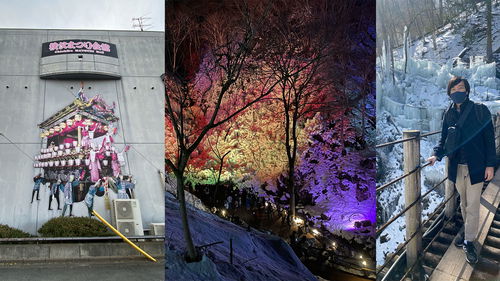


Comments
Prima Beitrag um sich erstmal zu orientieren. Wir waren schon einmal im Mai in Japan, in der Region um Tokio, Kyoto und Hiroshima. Es war eine tolle Reise . Nun haben wir vor vielleicht mal den Süden zu besuchen. LG Doreen